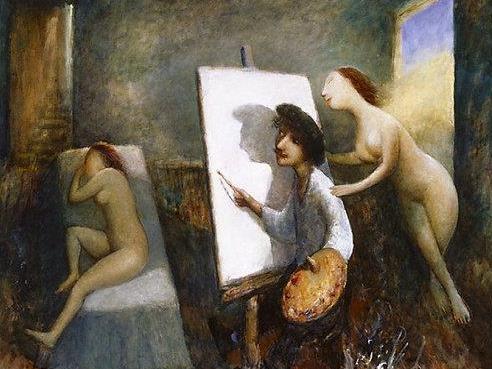Garry Shead, The Studio (detail) Photo: Art Gallery of NSW
Who makes art in Australia and who evaluates its worth? At least until the 1970s one could argue that it was largely the same group of people. Artists and their peers dominated the art bureaucracy, served as the directors of the various state galleries, made up the majority of members on the boards of trustees, were the art critics, were appointed as art judges, and made up most of the selectors for various state-sponsored exhibitions. Gradually much of this started to change as a new generation of university-trained professionals emerged, who had little or no practical experience of art making, but took up the top positions as gallery directors, art critics and art judges, while increasingly captains of industry, bankers and media personalities came to dominate the membership of the boards of trustees. By the turn of the century the process of professionalisation and institutionalisation of the Australian art world was comprehensively in place, and the public art gallery network, the Australia Council, and the various state and territory funding organisations were almost exclusively in the hands of non-practitioners who headed a complex art bureaucracy in which art practitioners were sometimes ‘represented’, but were rarely in a majority.





